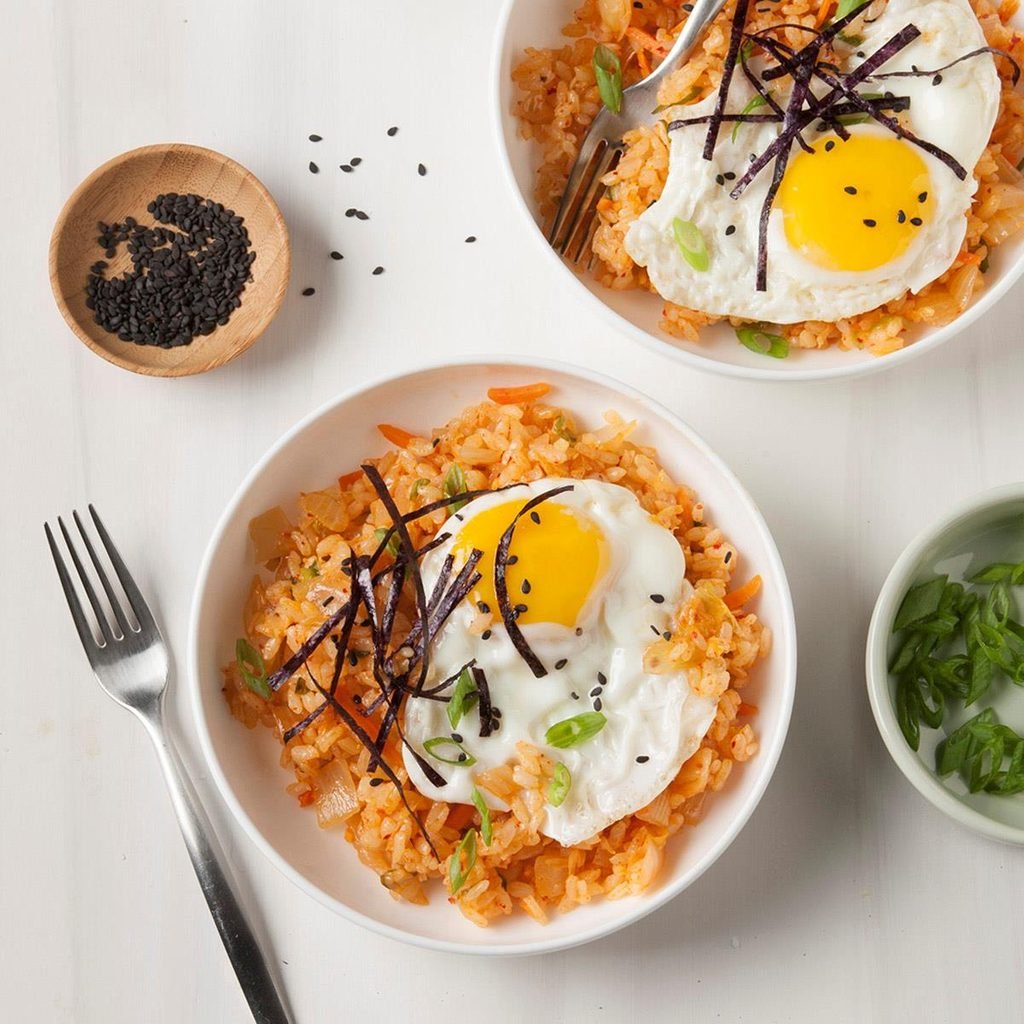Home Recipes Cuisines Asia Korean
Kimchi Fried Rice
Prep/Total Time: 20 min.
4 servings
Updated: Jan. 03, 2024
Forget ordinary fried rice! Kimchi fried rice is just as easy, but it packs a flavorful punch. This is a fantastic use for leftovers too. You can freeze the fried rice for up to three months. When cooking your defrosted rice, add a little extra soy sauce so it doesn't dry out. —Taste of Home Test Kitchen




















